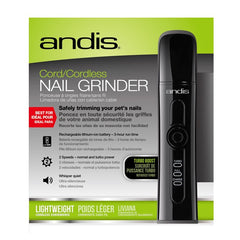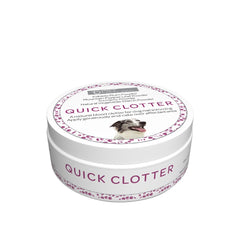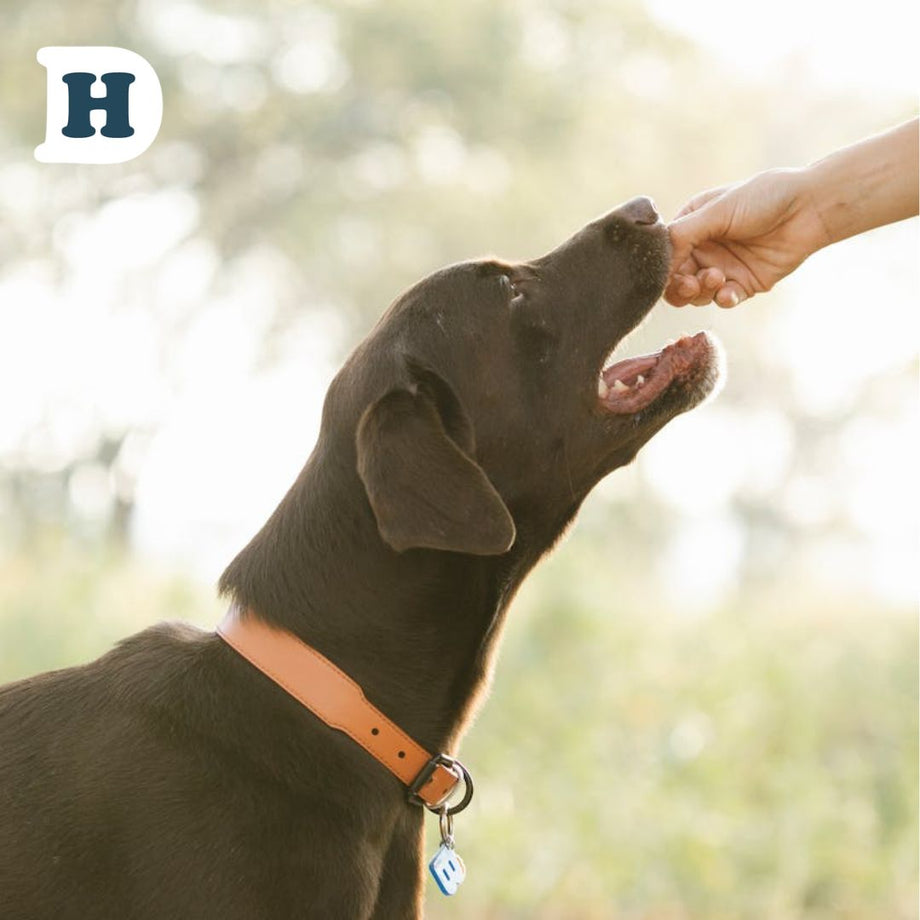 Are you tired of the struggle and anxiety that comes with trimming your dog's nails? Look no further, because we have the expert advice you need to make this daunting task a breeze. Nail trimming is an essential part of your dog's grooming routine, but it can be a challenging and intimidating process for both you and your furry friend. However, with the right knowledge and techniques, you can turn this seemingly impossible task into a stress-free experience. In this comprehensive guide, we will cover everything from why nail trimming is important to step-by-step instructions on how to do it effectively and safely. Whether you are a seasoned pet owner or a first-time dog parent, our expert tips and tricks will help you conquer your fears and become a pro at nail trimming. So, grab your clippers and let's get started on this journey to perfectly manicured paws!
Are you tired of the struggle and anxiety that comes with trimming your dog's nails? Look no further, because we have the expert advice you need to make this daunting task a breeze. Nail trimming is an essential part of your dog's grooming routine, but it can be a challenging and intimidating process for both you and your furry friend. However, with the right knowledge and techniques, you can turn this seemingly impossible task into a stress-free experience. In this comprehensive guide, we will cover everything from why nail trimming is important to step-by-step instructions on how to do it effectively and safely. Whether you are a seasoned pet owner or a first-time dog parent, our expert tips and tricks will help you conquer your fears and become a pro at nail trimming. So, grab your clippers and let's get started on this journey to perfectly manicured paws!Why is dog nail trimming important?
Proper nail care is crucial for your dog's overall health and well-being. Neglecting to trim your dog's nails can lead to a variety of problems, including discomfort, pain, and even injury. Overgrown nails can cause your dog's toes to splay, leading to joint pain and difficulty walking. Additionally, long nails are more prone to breaking, which can be painful and may result in bleeding or infection. Regular nail trimming also helps prevent the nails from curling and growing into the pads, which can be extremely painful for your furry friend. By keeping your dog's nails at the appropriate length, you are ensuring their comfort and preventing potential health issues.
Understanding the anatomy of a dog's nails is essential before attempting to trim them. A dog's nail consists of the quick, which is the sensitive part of the nail that contains blood vessels and nerves, and the outer shell, which is made of keratin and is similar to our own nails. The quick is pink in light-colored nails and more difficult to see in dark-colored nails. It's important to be cautious when trimming your dog's nails to avoid cutting into the quick, as this can be painful and cause bleeding. Familiarise yourself with your dog's nail anatomy to ensure a safe and successful trimming session.
How often should you trim your dog's nails?
The frequency of nail trimming depends on various factors, including your dog's breed, age, and activity level. At Delivery Hound, we understand the importance of maintaining your hounds nails as one aspect of maintaininng good health and well-being. Dogs who spend a lot of time outdoors or on hard surfaces naturally wear down their nails more, reducing the need for frequent trimming. On the other hand, smaller breeds or those with less physical activity may require more regular nail care. As a general guideline, most dogs need their nails trimmed every 4-6 weeks. However, it's important to monitor your dog's nails regularly and trim them as needed to prevent overgrowth. If you can hear your dog's nails clicking on the floor, it's a sign that they are too long and need to be trimmed.
Tips for preparing your dog for nail trimming
1. Start with positive associations: Introduce your dog to the nail trimming process gradually and positively. Associate nail trimming with treats, praise, and rewards to create a positive association. This will help your dog feel more comfortable and cooperative during the process.
2. Get your dog accustomed to handling: Regularly handle your dog's paws and nails, even when you're not trimming them. This will help your dog get used to having their paws touched and minimize resistance during nail trimming.
3. Create a calm environment: Choose a quiet and comfortable space for nail trimming. Minimise distractions and ensure your dog feels relaxed before starting the process. Consider playing soothing music or using calming techniques to help create a calm environment.
Remember, patience is key when preparing your dog for nail trimming. Take your time and go at a pace that your dog is comfortable with. By following these tips, you will set the stage for a successful nail trimming session.
Different tools for dog nail trimming
 Now that you've prepared your dog for nail trimming, it's time to gather the necessary tools. There are various tools available for dog nail trimming, each with its own pros and cons. Here are some common tools you can consider:
Now that you've prepared your dog for nail trimming, it's time to gather the necessary tools. There are various tools available for dog nail trimming, each with its own pros and cons. Here are some common tools you can consider:1. Nail clippers: Nail clippers come in different shapes and sizes, including guillotine-style clippers and scissor-style clippers. Choose clippers that are specifically designed for dogs and ensure they are sharp and in good condition. Always select nail clippers that have a safety guard on them to prevent over cutting.
2. Nail grinders: Nail grinders are electric tools that gently grind down the nails. They are a popular choice for dogs who are sensitive to the pressure applied by clippers. Nail grinders allow for more control and precision in shaping the nails.
3. Lickimat: The Lickimat Splash can be attached using the suction cup to glass doors, bathtubs, tiled wall surfaces, and even floor tiles! Use a lickimat with your dog's favourite toppings spread over it to distract them.
Consider your dog's comfort and your own preferences when choosing a tool. It's important to select a tool that you are comfortable using and that suits your dog's individual needs. Whichever tool you choose, always ensure it is clean and sanitised before use.
Step-by-step guide to trimming your dog's nails
Now that you have the tools and your dog is prepared, it's time to trim those nails. Follow these step-by-step instructions to ensure a safe and successful nail trimming session:
1. Find a comfortable position: Choose a position that allows you to easily access your dog's paws and nails. Some options include sitting on the floor with your dog or placing them on a raised surface like a grooming table.
2. Hold your dog's paw: Gently hold your dog's paw and apply light pressure to extend the nails. This will help you see the quick and determine how much to trim. Be cautious not to squeeze or put too much pressure on the paw, as this may cause discomfort.
3. Identify the quick: Examine the nail and locate the quick. In light-colored nails, the quick is visible as a pink area. In dark-coloured nails, it may be more challenging to see. Trim small amounts at a time to avoid cutting into the quick.
4. Trim the nails: Using your chosen tool, carefully trim the nails, following the natural curve of the nail. Aim to trim just above the quick, leaving a small margin to avoid cutting into it. If your dog has dewclaws, don't forget to trim those as well.
5. Monitor your progress: After each nail, examine the cut surface to ensure you didn't cut into the quick. If you accidentally cut the quick and there is bleeding, apply a styptic powder or a clean cloth to stop the bleeding. Take a break and reassure your dog before continuing.
6. Reward and praise: Throughout the process, remember to provide treats, praise, and encouragement to reward your dog for their cooperation. This will help create a positive association with nail trimming and make future sessions easier. Use your lickimat with your dogs favourite topping on it!
By following these steps, you can confidently trim your dog's nails while reducing the risk of cutting into the quick. Remember, practice makes perfect, so don't be discouraged if it takes a few attempts to get the hang of it. With time, you'll become more confident and efficient in nail trimming.
What to do if you accidentally cut the quick
Apply Quick Clotter: Using a clean cloth or a cotton swab, apply styptic powder such as Pet Natural Quick Clotter to the bleeding nail. This helps promote clotting and stops the bleeding. Apply gentle pressure for a few minutes until the bleeding subsides.
Seek veterinary assistance: If the bleeding doesn't stop or if you're uncertain about how to handle the situation, it's best to seek veterinary assistance. They can provide further guidance and ensure that the nail is properly treated and monitored.
Remember, accidents happen, especially if your dog has dark coloured nails and it's important not to blame yourself. Provide comfort and reassurance to your dog, and take the necessary steps to stop the bleeding. With time, both you and your dog will recover from the incident and be ready to tackle nail trimming again.
Alternatives to traditional nail trimming
If your dog is particularly resistant to nail trimming or if you prefer to explore alternative options, there are a few alternatives to consider:
Regular exercise and walking: Regular exercise on different surfaces can naturally wear down your dog's nails, reducing the need for frequent trimming. Long walks on pavement or concrete can help keep the nails at an optimal length.
Scratching posts and pads: Providing your dog with scratching posts or pads can help naturally file down their nails. Encourage your dog to use these scratching surfaces regularly to keep their nails in check.
Professional nail filing: Some grooming salons offer nail filing services, where a professional uses a grinder or file to shape and smooth the nails. This option may be suitable for dogs who are sensitive to traditional nail clippers.
While these alternatives can help maintain your dog's nail length to some extent, regular nail trimming is still important to prevent overgrowth and maintain proper nail health. Consider incorporating these alternatives in conjunction with regular nail trimming to find the best solution for your dog.
Common mistakes to avoid when trimming your dog's nails
When it comes to trimming your dog's nails, there are a few common mistakes that you should avoid:
1. Cutting into the quick: One of the most common mistakes is cutting into the quick, which can be painful and cause bleeding. Take your time, trim small amounts at a time, and be cautious when nearing the quick.
2. Using dull tools: Using dull nail clippers or grinders can cause crushing or splitting of the nail, making it more challenging to achieve a clean cut. Ensure your tools are sharp and in good condition for a smooth trimming experience.
3. Neglecting regular maintenance: Regularly monitoring your dog's nails and maintaining them at the appropriate length is crucial. Neglecting regular nail care can lead to overgrowth, discomfort, and potential health issues.
4. Skipping desensitisation and preparation: Failing to prepare your dog for nail trimming can result in resistance and anxiety during the process. Take the time to desensitise your dog to the handling of their paws and create positive associations with nail trimming.
By avoiding these common mistakes, you can ensure a safe and effective nail trimming experience for both you and your dog. Remember, patience, practice, and a calm approach are key to successful nail trimming.
Professional dog nail trimming services
If you're still unsure about trimming your dog's nails or if your dog is particularly difficult to handle, professional nail trimming services can be a great option. Many pet grooming salons offer nail trimming services performed by experienced professionals. These professionals are skilled in handling different dog breeds and temperaments, ensuring a safe and stress-free experience for your furry friend. Additionally, they have the necessary tools and expertise to trim your dog's nails efficiently and effectively. Consider seeking professional assistance if you're uncomfortable or if your dog requires specialised care during nail trimming.
Dog nail trimming may seem like a challenging task, but with the right knowledge and techniques, it can become a routine part of your dog's grooming regimen. Regular nail care is essential for your dog's comfort and overall health. By understanding the importance of nail trimming, familiarising yourself with your dog's nail anatomy, and following the step-by-step guide provided, you can confidently trim your dog's nails while reducing the risk of injury. Remember to prepare your dog for nail trimming, choose the right tools, and avoid common mistakes. If necessary, seek professional assistance to ensure a safe and stress-free experience. With practice and patience, you'll soon become a pro at dog nail trimming, keeping your furry friend's paws perfectly manicured and healthy. Happy trimming!
©deliveryhound.com.au 2023







